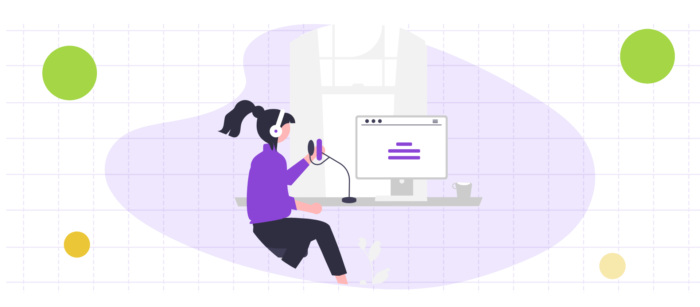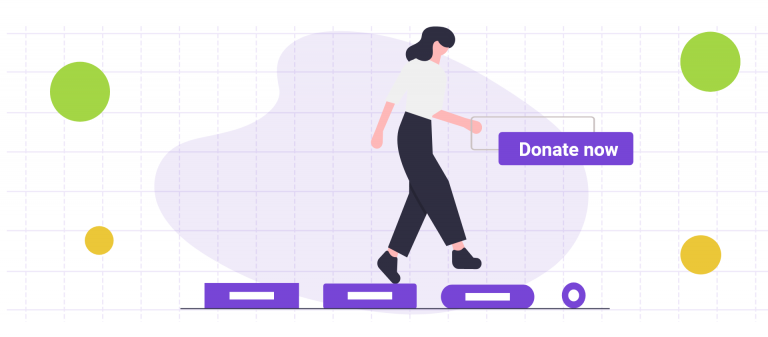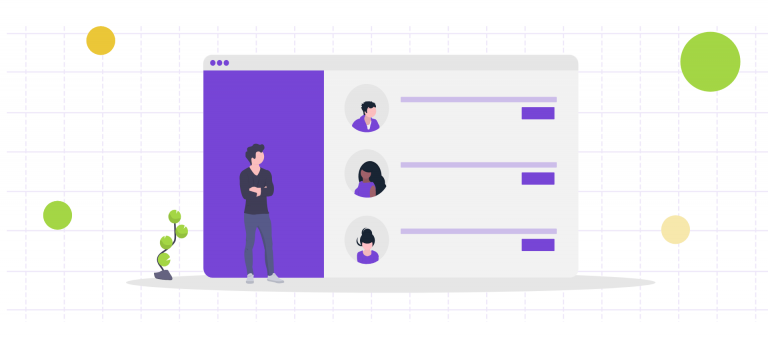Artificial Intelligence for Nonprofits: 15 Ways to Use ChatGPT and Other AI Tools to Raise More

Have you been chatting with your friends only to hear someone singing the praises of a new tool that is changing the way every industry completes its work? That’s right, we’re talking about ChatGPT, an AI-powered tool that is all over social media and completely changing the game. While you may be seeing content about ChatGPT everywhere you look, have you stopped to consider how it and artificial intelligence for nonprofits overall could help you and your team save resources and raise more? Look no further, because we have put in the work and compiled the top ways that your nonprofit can use AI tools to their full potential!
Let’s start with the most likely reason that you stumbled on this article, ChatGPT. What is this new website that’s taking the world by storm? ChatGPT is an online tool that uses artificial intelligence and machine learning to understand and respond to requests entered by its users. It has the ability to generate human-like responses to just about anything asked of it, making it an ideal tool for nonprofits looking for support in their communications, engagement, and fundraising efforts.
It’s no secret that technology is advancing, and nonprofits will need to get on board if they want to stay ahead of the curve and ensure that they are retaining their top donors. But quick advancements in technology can be intimidating, leaving many nonprofits wondering how to get started. We have put together a few ways that your nonprofit can take advantage of ChatGPT and other AI-powered technology and machine learning tools to deepen donor relationships, streamline communications, and ultimately raise more money.
8 Ways Nonprofits Can Use ChatGPT to Raise More

Before we dive into all of the amazing things that ChatGPT can do to help your organization, we want to preface this by saying that it does have its limitations. This tool does not replace the human touch and should be heavily reviewed and edited before being used publicly, especially for anything that you put on your website. That being said, it remains an incredible artificial intelligence tool for nonprofits so let’s focus on all of the great things it can do for you!
1. Creating Personalized Donation Appeals in Minutes
Use ChatGPT to write a series of donation appeals encouraging your stakeholders to give money to your cause. The tool will create the email and/or letter copy based on the information that you enter, so be as specific as possible. This copy should then be edited and reviewed to add a personal element, such as a story from your community or an update on the important work being done toward your mission.

The tool will let you know if it needs more context from you, so enter as much detail as possible and let it do the work, easing the time-consuming process of copywriting.
2. Promoting an Upcoming Fundraising Event to Boost Ticket Sales
Yes, ChatGPT can even help you write event invitations, develop posts for your social platforms and promote your fundraising events such as an annual gala or a fun run. Using the tool in this way will help you save time and energy on writing promotional emails, recruitment posts for social media, or maybe even copy for on-site signage!
3. Segmenting Your Donors and Creating Custom Communications for Each Group
ChatGPT can be helpful not just when developing your segmented communications, but also for determining what your segments are. Try typing in “how should nonprofits segment donors” or “what are common nonprofit donor segments” into the tool. This may just give you new ideas on how to personalize your donor communications and tailor your copy for each segment, leading to higher engagement and email open rates.
To do this successfully, it's important to have a donor management tool like Keela to properly understand your contacts and segment them strategically.

4. Stewarding and Engaging Donors
This is one of the greatest uses of this tool! You likely spend a lot of time and energy ensuring that your donors feel appreciated, which is incredibly important for donor retention. ChatGPT can do a lot of this work for you! The tool will draft stewardship emails, write copy for impact and annual reports and even write speeches for you that can be used at stewardship events. Let ChatGPT do time-consuming copywriting and then use Keela Automation to streamline your efforts and you can save even more time!
5. Maximizing your peer-to-peer fundraising efforts
Use ChatGPT to create engaging fundraising appeals for your peer-to-peer fundraisers and enable them to ask for donations on your behalf. This could be fundraising email templates, inspirational copy for peer-to-peer fundraising pages, and social posts all about your cause. Providing your fundraisers with these materials can help to expand the reach of the nonprofit and engage new potential donors through your existing fundraisers.
6. Impact Sharing
By entering a few details about your organization, ChatGPT can provide you with boilerplate language around your impact, mission, and programs. This is information that should be easily accessible to your donors and used in multiple places to give donors the confidence that their gifts are well handled. A great place for copy like this is on your website, in your annual and impact reports, in 1:1 donor communications, and in any newsletters or publications that your organization puts out.
7. Engaging Volunteers and Your Board
Use ChatGPT to recruit, engage and manage volunteers. Creating personalized emails can help streamline processes, share updates, and ensure that the right people are receiving the information they need to continue supporting your organization. It’s also a great tool to write stewardship emails to your board or to provide them with important updates on your mission.
8. Creating exciting challenges and fundraising campaigns
Need an idea for a new fundraising challenge? Type that in. Feel like the campaign emails that you’re sending are repetitive and stale? Type it in! ChatGPT will help you mix it up to generate excitement and motivate your supporters to take action. Sometimes we all need a little help to keep our communications fresh and interesting to our supporters.
With ChatGPT getting so much attention right now, it’s important to not ignore the other powerful artificial intelligence tools out there that can help you and your team accomplish your goals. Artificial intelligence for the nonprofit sector isn’t new, however, the ways in which organizations are able to take advantage of it continue to grow. This means that AI tools will play a key role in the future of fundraising. In addition to ChatGPT, here are a few other artificial intelligence tools that provide great benefits for nonprofit organizations of all shapes and sizes!
7 Artificial Intelligence Tools for Nonprofits:
1. Predictive Analytics
You may be asking, what the heck are predictive analytics? We get it, the term can be quite a mouthful, but it’s actually quite simple! Predictive analytics is one of the most powerful artificial intelligence and machine learning tools for the nonprofit sector.
Predictive analytics is the use of AI algorithms to gain valuable insights into your business. To put it in even simpler terms, predictive analytics makes it possible for you to gain invaluable information about the donors living in your database and synthesize large sets of data points. If you’re wondering who will be your next major gift donor, who is in danger of lapsing, or who has the capacity to give more than they currently are, predictive analytics is the place to find that information. These tools help nonprofits ensure that no money is being left on the table!
Keela is one of the few CRMs on the market actively using predictive analytics, making it a great choice for nonprofits of all sizes looking to increase fundraising revenue.
2. Automation
Did we surprise you with this one? That’s right, automation is in fact an AI tool, and one of the most useful ones for the nonprofit sector. It’s time to leave the tedious manual tasks behind and explore how automation can help you schedule your communications, set reminders, and increase efficiency in your organization. Plus, automation is one of Keela’s top features and allows our customers to get thousands of hours back every year. That's time they now get to spend building relationships with donors.
3. Chatbots
Have you ever been on a website and heard the ping of a chatbot in the corner of your screen? You may think they only work for corporations, but chatbots can play a huge role in nonprofits as well.
There are nonprofits out there (such as Kids Help Phone), who have already started using AI-powered chatbots as an effective way to support their business. Chatbots will also likely become more and more popular as more donors look for ways to engage with nonprofits but are less interested in the human interaction side of it (millennials and gen z - we’re looking at you!)
The beauty of chatbots is that you can set them up to say pretty much anything! Whether you are trying to help donors navigate your website, looking to share mission updates or promote an event, AI-powered chatbots can do the heavy lifting for you!
4. Prospect Research Tools
Gone are the days of endlessly googling your prospects to try and piece together enough information to make your ask. AI has made a ton of progress when it comes to prospect research and nonprofits are now able to use AI-powered tools that will provide insights that wouldn’t be available otherwise (think wealth indicators, demographic information, etc.)
A great example of this is Keela’s integration with Donor Search which provides actionable information that will identify the best prospects for major, annual, and planned giving donors.
5. Text and Sentiment Analysis
Text and sentiment analysis is the process of identifying and analyzing information from text. Wouldn’t you love to find out what people are saying about you on social media platforms or in online posts? Text and sentiment analysis will do that for you so that you can better understand how your content is resonating with your audience and do more of what works, and less of what doesn’t!
6. Image and Video Analysis
Nonprofits can use AI tools to analyze images or videos and identify patterns and trends. This can prove especially useful for mission work such as looking for changes in wildlife populations or determining the effectiveness of conservation efforts.
7. Grammar and Spelling tools
Whether you still want your copywriting to be done by a human, or you’ve decided to put your trust in a machine, tools to correct spelling and grammar are a great example of artificial intelligence for nonprofits. By using tools such as Grammarly, you can let your creative juices flow into your copywriting and supplement it with a quick scan for proper grammar, punctuation, and spelling.
In conclusion, artificial intelligence for nonprofits is game-changing. It aims to aid operational decisions, support proper data management, enhance the fundraising process, increase donor engagement, and manage time-consuming tasks.
By using AI to analyze data points, identify patterns, and make predictions, nonprofits can make more data-driven decisions without having to invest a significant amount of time in the analysis phase. With more and more AI and machine learning tools becoming available, it’s important for nonprofits to consider how and when to use these tools. Nothing matches the personal touch, but AI can act as its greatest sidekick, taking on the administrative burdens for nonprofit professionals and freeing up time to build long-lasting donor relationships.
.svg)



